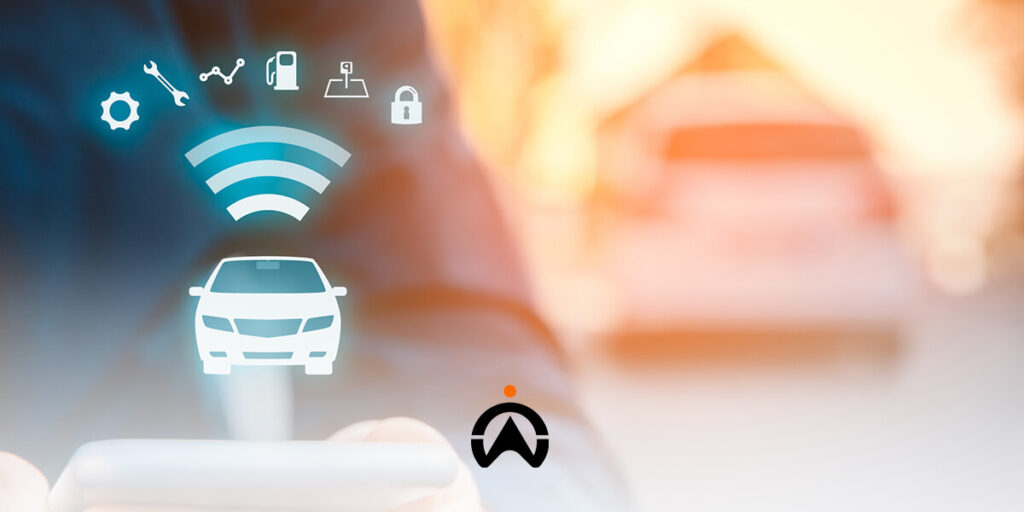Expert Guide: The Power of IoT in Fleet Management for Australian Businesses

This is your expert guide to the power of IoT in fleet management for Australian businesses. Explore the game‑changing potential of IoT and discover how it will transform your business management practices.
You are about to delve into the ever‑progressing realm of IoT in fleet management, grabbing expert insights along the way, helping you navigate the IoT landscape and convert your fleet into a profit‑producing machine.
In this article, you will:
• Gain expert insights into the dynamic fleet management market in Australia
• Explore the transformative impact of IoT on the fleet management landscape
• Uncover the top 8 benefits of using IoT in fleet management
• Discover how Cartrack can transform your fleet operations
• Examine relevant Australian regulations and cost‑examples to ensure your business stays compliant and profitable
The fleet management market: condition and challenges in Australia
In recent years, the Australian fleet management sector has evolved rapidly. Fleet owners, from small contractors to large logistics firms, are increasingly adopting telematics and connected technologies. The number of active fleet management units is growing year on year. While projections differ by state, many analysts believe the fleet telematics market in Australia will grow at a compound annual growth rate between 8‑12% over the next few years, with significant uptake expected in rural and regional areas as well as major metropolitan centres.
However, this growth comes alongside major challenges. Many fleets still rely on basic tracking devices—GPS units that record location only—without leveraging more advanced IoT features such as engine diagnostics, driver behaviour monitoring, or automated compliance tools. Regulatory variation between states adds complexity: what’s required in Western Australia may differ from New South Wales or Queensland, especially given heavy vehicle access, emissions and safety compliance regimes.
Additionally, cost pressures are high. Fuel price fluctuations, rising labour costs, increasing insurance premiums, and maintenance expenses all squeeze profit margins. Infrastructure constraints—road condition, traffic congestion, remote site access—also affect fleet efficiency. Because of all this, fleet managers who can use data, automation, and smarter tools stand to gain a competitive advantage.
Introduction to IoT: How technology is changing the way you manage your fleet
IoT, or the Internet of Things, refers to embedding ordinary objects—vehicles, trailers, machinery—with sensors, connectivity, and processing power so they can collect and transmit data. For fleets, this means that rather than guessing how vehicles are used—or reacting to breakdowns—you can monitor practically everything: location, engine health, driver behaviour, fuel use, idle time, harsh braking, and more.
Modern fleet management systems combine IoT hardware (sensors, gateways), telematics, cloud-based platforms, and analytics (including AI and machine learning). This allows real‑time data capture, alerts for deviations (for example, overdue maintenance or dangerous driver behaviour), and predictive insights (like estimating failures before they occur).
In Australia, some regulatory frameworks already encourage or require the use of data‑driven monitoring. For example, the Heavy Vehicle National Law includes obligations under the Chain of Responsibility that push for visibility of operational practices. Also, programs such as Intelligent Access (for route permissions) may require telematics or proof of vehicle performance and compliance.

Top 8 benefits of IoT in fleet management
Here are eight powerful ways IoT can elevate fleet management in Australia:
Enhanced route planning and real‑time tracking
GPS and IoT combined allow you to plan routes based on live traffic, avoid bottlenecks, reroute around congested or dangerous zones. In remote or regional settings—remote mines, rural construction sites—this can mean huge savings in travel time and fuel.Automation of manual tasks and admin
Records like driver hours, vehicle usage, maintenance logs, compliance documentation can be automated. Less paperwork, fewer mistakes, faster reporting. This frees up management time to focus on growth and strategy.Preventative vehicle maintenance
With sensors monitoring engine temperature, oil pressure, battery health, brake pads, tyre pressure, you receive alerts before problems become serious. Scheduled maintenance prevents unexpected breakdowns, reduces repair costs, and improves uptime.Fuel efficiency improvements
Given Australia’s high fuel prices and frequently long distances, small inefficiencies add up fast. Monitoring idle times, inefficient routing, aggressive driving habits leads to savings. Even a 5‑10% improvement on fuel can significantly bolster profits.Improved delivery, asset and equipment utilisation
Not just vehicles—trailers, machinery, on‑site heavy plant like excavators or concrete mixers—all can be tracked. You can monitor usage, ensure assets are not sitting idle, and deploy them where they are needed most. This leads to better ROI on capital investment.Driver safety control and risk reduction
Harsh braking, speeding, fatigue, distractions—all these contribute to accidents and insurance claims. IoT sensors and in‑cab cameras help you detect unsafe behaviour. Then you can coach, retrain, or schedule safety interventions. This lowers risk and enhances your safety record.Customer satisfaction and service consistency
With real‑time tracking you can give accurate ETAs, handle delays proactively, communicate better with clients. This builds trust and often results in repeat business and better reputation.Regulatory compliance and legal protection
IoT helps you meet obligations under the Heavy Vehicle National Law, Chain of Responsibility, fatigue management rules, emissions standards, access permits, and so on. Also, having accurate logs helps in audits, insurance claims, and avoiding fines.
How Cartrack can transform your fleet operations
Cartrack offers a comprehensive suite of IoT‑powered tools tailored to the Australian environment. Here’s how your operations can grow:
GPS tracking & geofencing: Know at all times where vehicles, trailers, plant and machinery are. Geofence sites so you get notifications if equipment leaves a site or moves outside authorised zones.
Vehicle diagnostics & health monitoring: Systems monitor engine warnings, oil temp, coolant, brake pad wear, battery status. Warnings enable preemptive servicing.
Driver ID & safety tech: Driver ID tags ensure only authorised, licensed personnel operate vehicles. In‑cab cameras or sensors detect distraction, mobile phone use, drowsiness and deliver alerts.
Fuel sensors & consumption analytics: Track actual fuel consumption, match with driver behaviour or route choice, detect fuel card misuse or potential theft, and find areas to optimise fuel spend.
Equipment & trailer tracking: Heavy machinery (excavators, loaders, concrete mixers) or trailers outfitted with sensors so you can see usage, location, and whether they are being used safely and efficiently.
Analytics dashboards & reporting: Detailed KPIs such as cost per kilometre, fuel usage per vehicle, idle hours per vehicle, maintenance trends, driver performance. Use these to forecast budgets, refine bids, quote more accurately.
Compliance tools: Digital work diary integrations, logging of driver hours, rest breaks, operating hours of machinery. Support your compliance with NHVR, WHS (Work Health & Safety) laws, state‐by‐state heavy vehicle access laws.
Australian regulations & cost examples
Under Chain of Responsibility, companies are required to take due diligence in safety, driver behaviour, load management, hours of work. IoT tools provide logged evidence to show compliance.
Heavy Vehicle National Law mandates certain safety standards. Some route access permits require telematics to monitor speed, engine performance, braking and more.
Example costs: fitting a prime mover with compliant telematics and sensors can cost in the order of AUD $6,000‑$8,000 depending on the features (cameras, sensors, connectivity). Trailer tracking and asset sensors can cost similarly, sometimes AUD $10,000‑$12,000 per trailer depending on type.
Return on investment is often achieved within 12‑18 months through fuel savings, fewer breakdowns, reduced insurance claims, better utilisation of assets, and enhanced ability to win bids because of better safety/compliance credentials
What next: preparing your fleet for an IoT‑powered future
Audit your current fleet: what kind of tracking or sensors are already installed? What manual processes are still eating time or causing errors?
Prioritise features: for some fleets, route optimisation and fuel savings will deliver rapid payback; for others, safety and compliance will be more urgent.
Plan for phased rollout: start with high‑value vehicles or high‑risk operations, test, iterate, then roll across the operation.
Train your teams: drivers and fleet managers need to understand how IoT data works, what alerts mean, and what actions they should take.
Budget wisely: build in connectivity costs (data plans), hardware maintenance, sensor replacement. Include these in your cost‑benefit calculations.
Keep compliance central: stay up to date with NHVR, local state regulations, WHS, emissions, access schemes. Use IoT data to satisfy audits, safety obligations, and tender requirements.
Conclusion
IoT in fleet management is no longer a “nice to have” — for Australian businesses, it’s becoming essential. With rising regulatory pressure, higher costs, and tighter margins, the companies that adopt connected, data‑driven fleet operations will gain safety, efficiency, compliance, and profitability. Cartrack offers the tools to make that leap: from diagnostics and driver safety to asset tracking, fuel management, and compliance. If you are ready to transform your fleet into a profit‑producing asset, it’s time to embrace IoT.
Discover how Cartrack’s GPS Fleet Tracking can transform your operations
book a free demo today.
